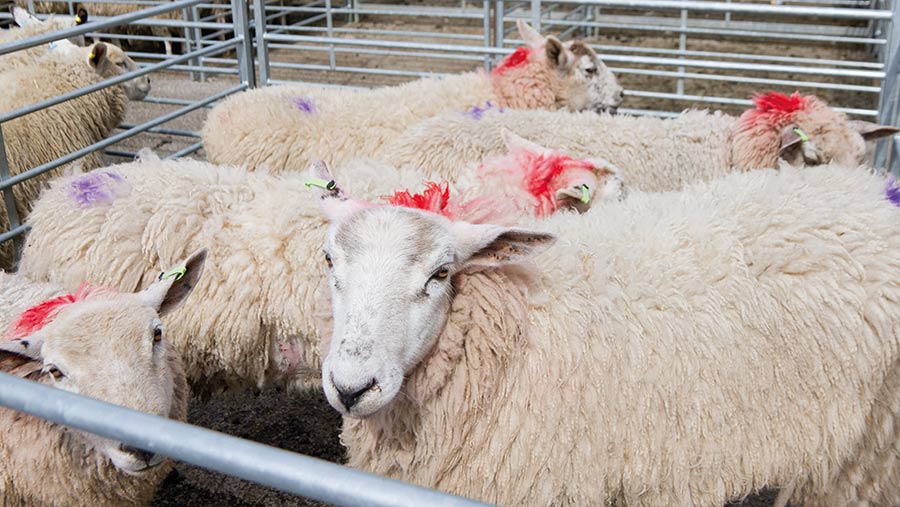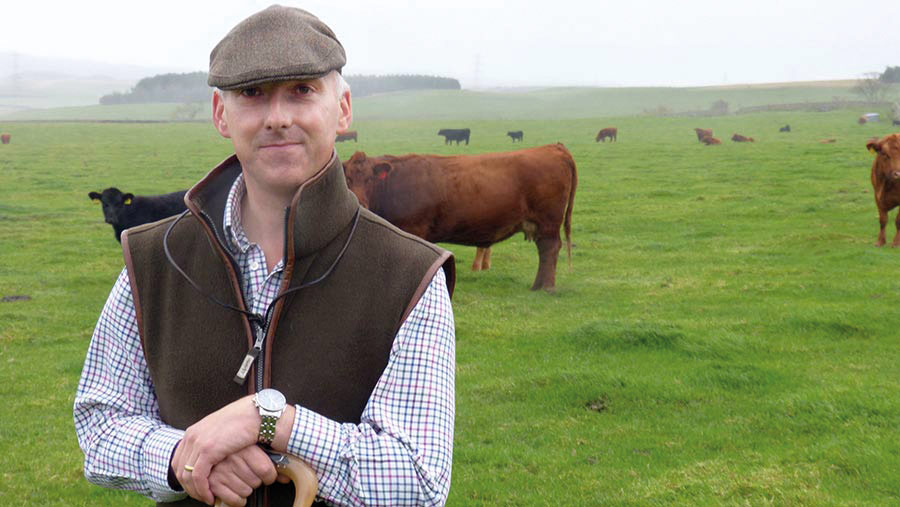Why “breed snobbery” could challenge liveweight sales
 © Countrylens/Adobe Stock
© Countrylens/Adobe Stock A desire to change the system, lower the cost base and move towards self-replacing maternal genetics has left some businesses in the cold when selling liveweight, Farmers Weekly has heard.
Concerned farmers say a move to increase hybrid vigour, lamb and calve outdoors or outwinter breeding stock can have unintended consequences for live marketing.
See also: Taking Stock looks back on 50 years of farming
This has thrown up a conundrum for some farms, with the “adapt or die” mentality competing with the desire to “sell live and thrive”.
Farmers acknowledge that many markets do their utmost to welcome new faces and each sale yard has a unique combination of staff, geography, seasonality and buyers.
Some farmers successfully target cattle and lambs at both liveweight and deadweight outlets.
However, they also say:
- Some breeds (composite sheep, cross-breds and native cattle) are overlooked at markets, even though kill sheets from the deadweight route show these animals kill out well
- Many suckler producers have downsized or dispersed and the continental-cross cow is anecdotally becoming too expensive to keep
- Producing U-grade cattle and lambs is hard work and requires a premium. Although many markets offer this, it can be seen to exclude native cattle, maternal lines, or composites.
Dominic Naylor, manager at Lilburn Estate, Northumberland

Dominic Naylor © MAG/Michael Priestley
Lilburn Estate
- 2,500 Stabiliser cows
- 9,500 ewes, of which 1,000 are Swaledale and 3,500 are Blackface
- 5,000 cross-bred lowland ewes
- Sells cull cows through live ring and some deadweight
- Sells store lambs through Longtown and Wooler
- Sells Christmas primestock cattle at Hexham
- Finished hill lambs sold deadweight through Sarah Devlin Livestock
- 1,000 finished heifers sold deadweight
- All bulls sold deadweight
- 90% of finished lowland lambs go liveweight through Wooler
Breed snobbery could see market throughputs challenged as more farms change breed and system to manage labour, inputs and subsidy removal, says Dominic Naylor.
Mr Naylor is a big advocate of competition and diversity in the marketplace, which is why he is keen to support live markets.
However, he cannot justify the hassle of organising small loads of prime cattle and has a very limited audience for the hillbred prime lambs at local markets, which is why they go as deadweight.
He says certain auctioneers and buyers must wake up to the fact that new “Brexit breeds” are growing in popularity to cut down on inputs and labour.
“We have used more Swaledales in recent years, because they make more money for the business but potentially less commission for a market,” he explains.
“We were mostly Blackface ewes and they scanned at 125% but had a better carcass. The Swaledales scan at 150-180% and rear big numbers of lambs, so they make more money to a farm business overall, even though they might individually bring in less.”
“Markets must realise that more people are demanding their sheep and cattle work for them, rather than the other way round.”
He believes that selling supermarket-type stock through the markets will keep the big processors at the ringside.
“I think our bulls will always go deadweight, due to the loading of them. It’s just so easy to load 40 bulls on a wagon, but it’s such a shame we can’t sell more prime heifers through the ring,” says Mr Naylor.
“I am not helping markets by taking a couple of finished cattle to a Christmas show now and then. If we were to sell a chunk of the 1,000 heifers we finish, then that might be something significant.”
However, he sent 40 cull cows liveweight for the first time, after a conscious decision to support markets and will do it again. They averaged £1,450.
Q&A with Phil Stocker, National Sheep Association chief executive

Phil Stocker © Tim Scrivener
How important is it that marts survive?
If the sheep sector followed the route of pigs, a lot of competition would disappear and it would likely erode lamb prices. It would also threaten the independence and diversity we see in the sheep sector.
Live markets undoubtedly offer a place where farmers can take a range of breeds and grades for different outlets.
What can marts do to keep competition thriving?
Auctioneers and procurement officers must attract buyers and create competition to ensure good prices, but to do this they need good-quality, clean, well-finished and marketable lambs.
If the market has quality lambs, then the buyers will come, and the more buyers, the more competition.
There must be good dialogue between auctioneers and farmers over what is being sought by buyers and demand trends. If prices are good, everyone benefits.
The second issue – more strategically – is getting supermarket recognition that live markets have high standards of animal welfare.
Have some NSA members stopped going to market?
Yes, some feel they are too busy to spend time there and some like the deadweight-selling relationship.
Many find the feedback on weights, carcass classification and health information such as liver scores very useful.
Do lower-cost, more maternal systems rule out the live market?
Many have moved to lower-cost, grass-based systems and still use live markets. Whichever way you breed lambs, it’s important to finish them properly.
Some deadweight vendors rely on the live markets to sell tail-enders or cull ewes.
Do we have a two-stream production system of supermarket sheep and liveweight sheep?
To an extent, but it’s not that clear cut. Many supermarkets must source from live markets.
Abattoirs are less dedicated to any one supply chain now and they all place different cuts into a variety of domestic and export markets to optimise value, and they do a good job of this.
Supermarket, export, butcher, catering and Halal specification are all different. Most importantly, farmers must focus on what is in demand and do their best to meet that demand.
Chris Dodds, Livestock Auctioneers Association (LAA) executive secretary
“The success of the livestock auction market system is based around the principle that vendors can present their stock for sale through a competitive forum, organised by the auction company, to multiple possible buyers.
“It facilitates prospective purchasers to choose what they wish to bid for, competitively bidding against fellow buyers to secure the animals they want, at the price the stock is worth on that day.
“The price of that animal is determined by the people around the ring.
“If they do not want to bid as much for a certain animal or breed as the vendor may hope, 99% of the time that will be because that is what the purchaser believes the true value of the animal to be.
“It has never been the auctioneer’s role to tell the buyer what they should be buying or how much they should pay for that animal.
“The auctioneer’s role has always very much been to support the vendor in providing the open, transparent and competitive environment in which they can sell and establish the true value of their livestock, as well as to provide buyers with access to a marketplace for all types, breeds and age of livestock.”
